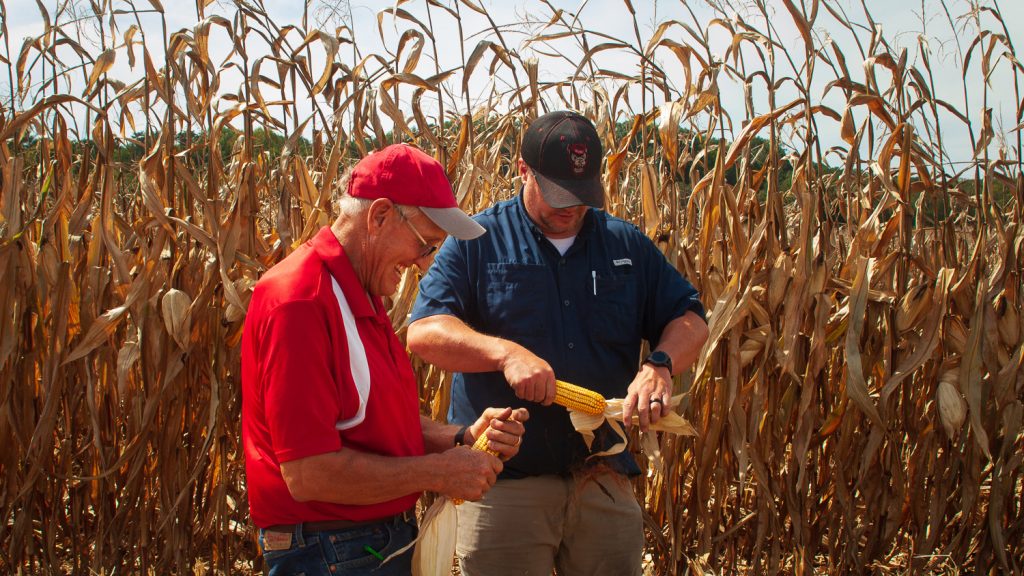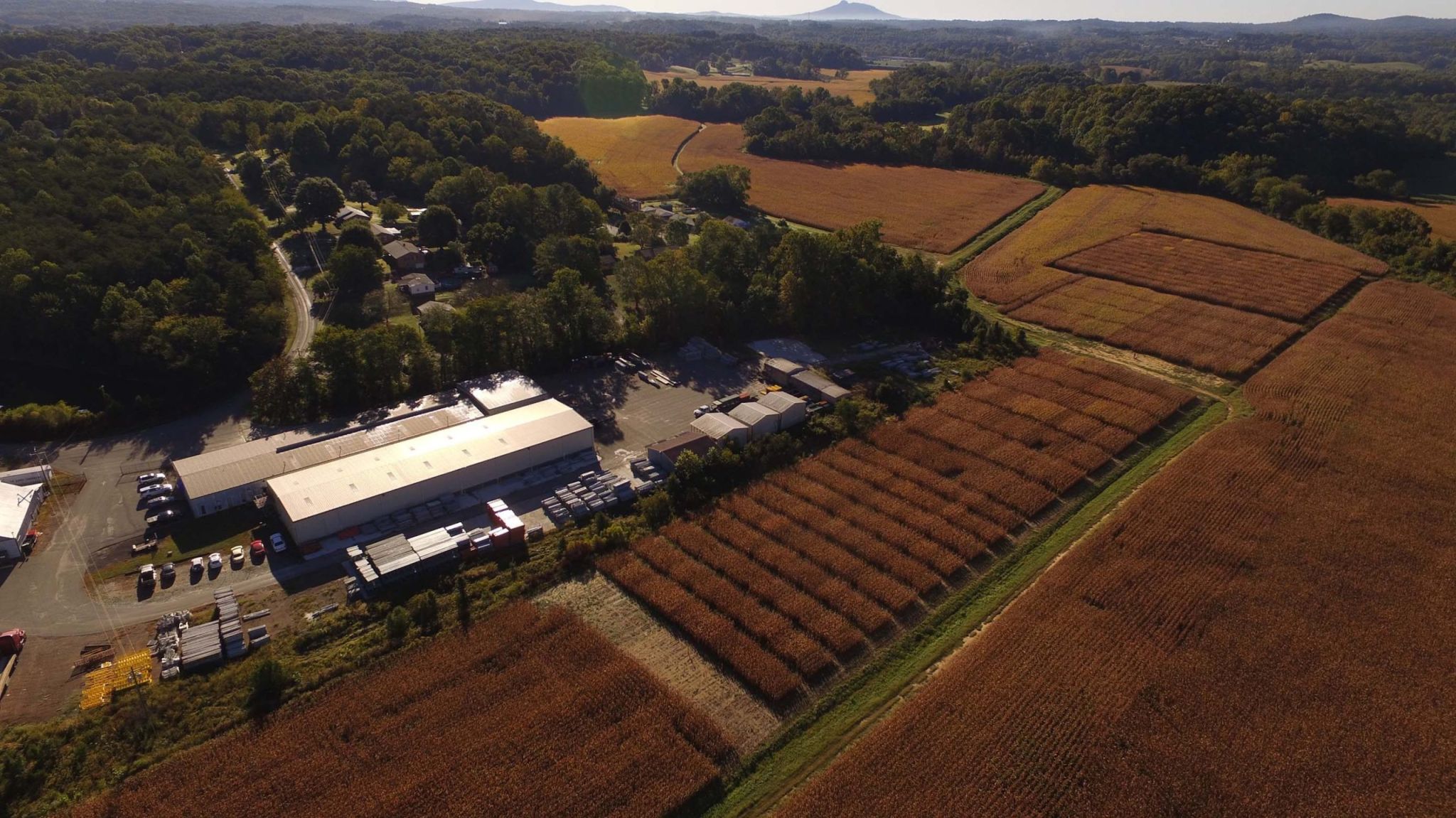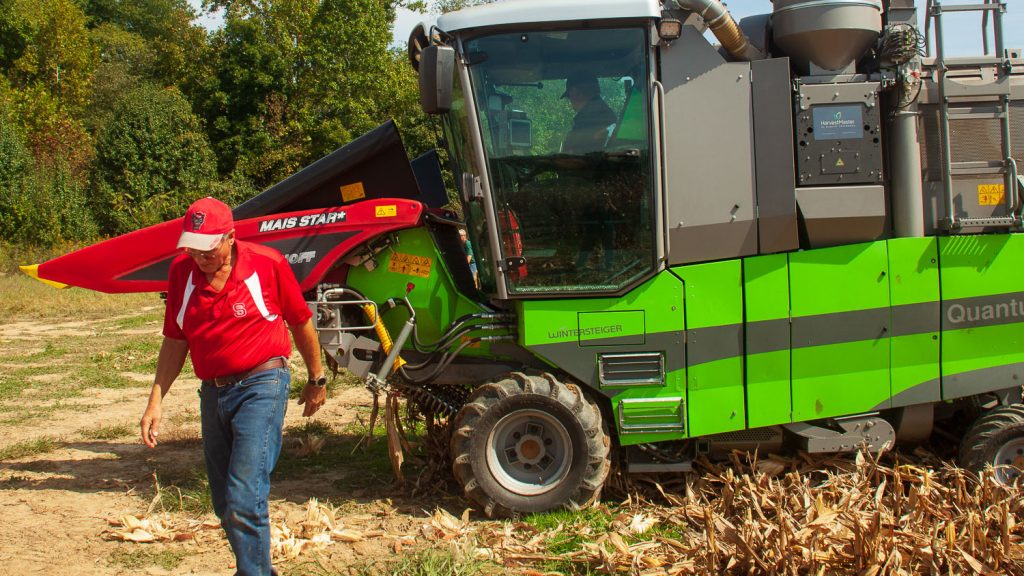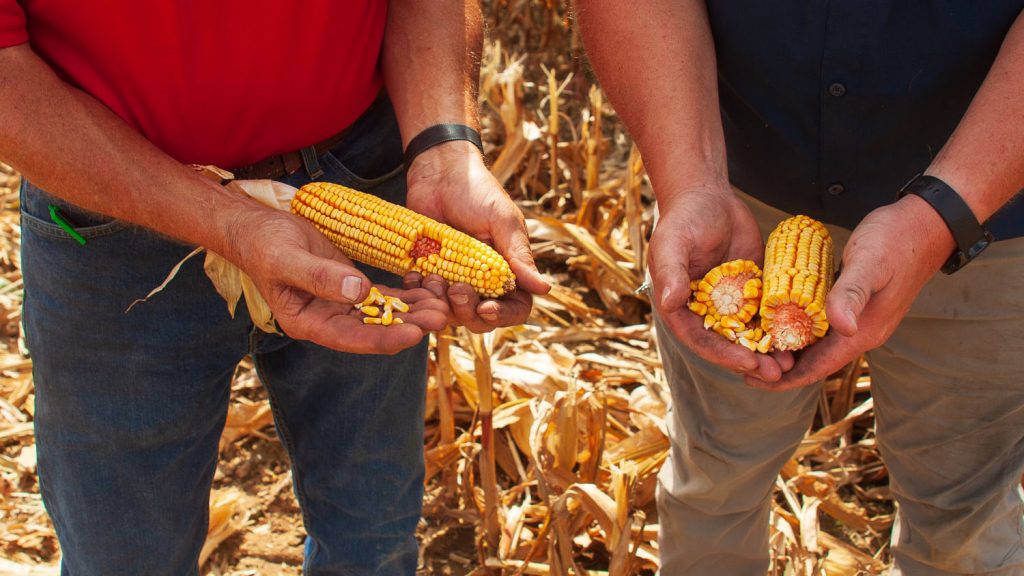Ron and Ryan Heiniger Carve Unique Paths in Crop Sciences at NC State

Ron and Ryan Heiniger, father and son, have a lot in common beyond their names: they share a passion for uncovering the science behind agriculture, a commitment to bringing research-based findings to growers and a propensity to talk about work at the dinner table.
“We come to Thanksgiving and the conversation with one another revolves around, ‘What was the best hybrid this year? Why was it better?’” said Ron Heiniger with a laugh. “And my wife is saying, ‘Could you guys stop talking about farming? We need to have some family time.’”
While this father-and-son team’s common interests may contribute to easy dinner conversation, it’s their differences that help them collaborate effectively and excel in their unique roles within the Department of Crop and Soil Sciences.
Ryan Heiniger, the Official Variety Testing (OVT) Program Director, uses his background in microbiology and industry experience to determine which crop hybrids, from soybean to sorghum, grow best in which conditions across North Carolina. In contrast, his father, Ron Heiniger, a professor of corn production and management, uses his Ph.D. in crop ecology and simulation modeling to improve understanding of the science behind growing corn, including the influence of canopy temperature and seeding rates on corn yield.
Despite their different research agendas, they embrace opportunities to collaborate with one another to advance applied research efforts and communicate with growers.
A Day in the Life of this Father-Son Duo
On a clear fall day in the Blue Ridge Mountain Valley of Mount Airy, North Carolina, the Heinigers’ commitment to applied research and collaboration with one another is on display as they harvest corn.

Both researchers have traveled from across the state to reach this location; Ryan is based about two hours away in Raleigh, while Ron is approximately four hours away in Plymouth, North Carolina.
Their collaboration on this six-acre corn plot in the Piedmont region began in January 2021, when the Heinigers contacted Tim Hambrick, an agriculture extension agent for Forsyth, Stokes, Surry and Yadkin Counties. This team aimed to uncover new insights about corn yield, from row spacing recommendations to suitable hybrids, and then share this information with growers in the Piedmont region.
Hambrick said he was motivated to work with the Heinigers, because their work has practical benefits to people in his community. He also said that this collaboration has moved quickly, allowing growers from the region to see the results in real time.
“Their work offers my growers a chance to improve production, which in turn increases the quality of their own lives, and most assuredly the quality of their local communities,” Hambrick said.
A key step to providing growers with these helpful findings is to complete the corn harvest and collect valuable data.
The front half of the corn plot houses Ron’s experiments where he is examining the impact of row spacing and canopy temperature on corn yield. His findings suggest that narrow corn rows have lower canopy temperatures, which can contribute to higher corn yield. He is investigating how fungi that live in the soil may help corn roots take in water, which can also lead to greater corn yield.

The back half of the plot is where Ryan, as part of the OVT Program, is testing different hybrids of corn to determine which yields most effectively under varying conditions across the state. In the Mount Airy plot alone, he is testing 90 different hybrids.
“We’re trying to see what hybrids will work best for growers,” Ryan said, “So it’s really just ‘plant it, manage it like a grower would, and find out what kinds of yield are we getting?’ How do these hybrids respond to different soil types? By climate? And then report that back to growers.”
As the team harvests corn from these experimental plots, the combine has a grain gauge that takes measurements on the corn, including its weight, test weight and moisture. These measurements are critical for computing corn yield, according to Ryan. He said they collect data on other aspects of corn beyond its yield, including disease resistance and stalk height. All of this data can provide valuable insight for growers.
While the Heinigers are focused on uncovering different types of new knowledge rooted in their separate research agendas, they are sharing equipment and resources to accomplish their goals. This collaboration can be very cost-efficient, especially because the equipment’s value, including the two combines, is worth over $500,000.
“That’s what I like about collaborative research,” Ron said. “You’re sharing resources. You don’t have to purchase three combines. You can help each other by lending your combine or lending your help.”
This father-and-son duo also lend their help to each other by sharing different perspectives. For example, Ron said that his son excels at adopting a big picture approach and being patient with uncertainty. In contrast, Ryan said he has learned from his dad’s work ethic and encyclopedic knowledge.

“We learn from one another’s strengths and try to incorporate those into our own lives,” Ron said. “I think that’s something that he and I have tried to do and what makes it fun for me to work with him.”
When it looked like it may rain before their scheduled planting at the Mount Airy site, Ryan showed off those strengths as a calm presence and holistic thinker to ensure the work would get done. Simultaneously, Ryan Heiniger said his dad challenges him to be more precise and analytical in his daily approach to work.
“He’s always been that rock that I could rely on for just about anything,” Ryan said of his dad.
Like any relationship, this father and son said they have their differences, from their political viewpoints to how to fix the combine. However, the Heinigers said they find common ground in their commitment to working hard. Specifically, Ryan said they jump in with “both feet” and give “150%” to their work. Ron Heiniger echoed this sentiment.
“We’re very different in some of these aspects,” said Ron about his son. “Both of us share one thing: a commitment to do the best job we can. I’m very proud of my son, because I’ve always held that as a high standard: to do the very best you can.”
A Shared Love for Disseminating Scientific Findings to Growers
While Ryan and Ron have distinct roles at NC State University, their positions share an applied focus, including an end goal of relaying the results of their scientific research to growers. Throughout the process, the Heinigers emphasized the key role of working with extension agents to accomplish their goals of helping growers.

“We’re linking in extension at each step of the process,” Ryan said.
On the other side, Hambrick emphasized the importance of working with researchers from NC State as they bring research-based findings to the community when the growers need it.
“Their work is real. It isn’t theoretical. It’s not something that may be useful in a few years,” Hambrick said. “We plant in spring. We harvest in the fall, we share that information in the winter; and the next spring, portions of the work will be occurring in fields all around North Carolina.”
To this end, approximately 60 growers have already visited the Mount Airy corn plot to learn about their research efforts in process, including the basic science related to corn root development. These in-person meetings with growers will continue into next year to share the findings.
Results from the Mount Airy plots, as well as other plots across North Carolina, are available to growers on the OVT website, as well as through a Variety Selection Tool. Moving forward into next year, the Heinigers and Hambrick plan to meet with growers to share their findings in person as well.
For now, this father-and-son team finished up their corn harvest, ensured the combines were secure on the trailer and hugged one another goodbye before heading their separate ways home.
“When you can work with somebody that makes your life better, that brings joy and satisfaction,” Ron said about his son. “I think every time you’re with them, it’s a good memory.”
This post was originally published in College of Agriculture and Life Sciences News.